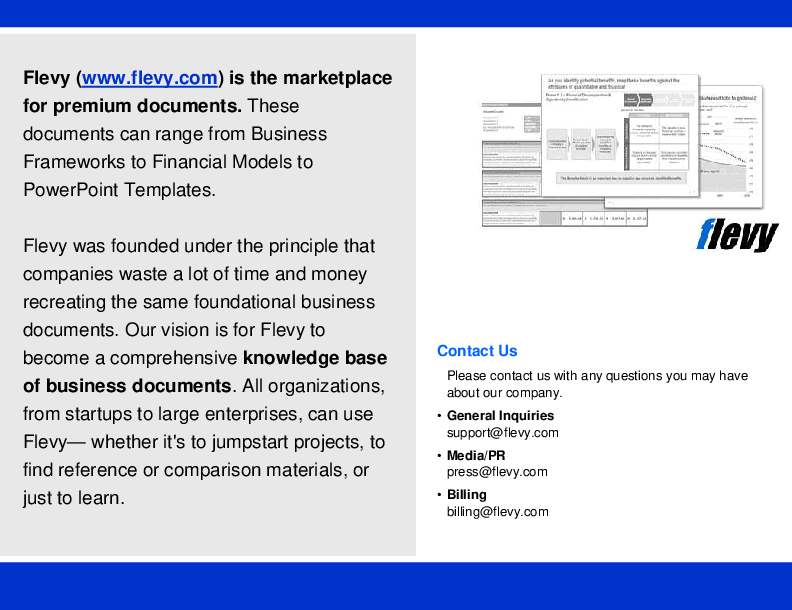Soft Side of Change Management (PowerPoint PPT Slide Deck)
PowerPoint (PPT) 20 Slides
CHANGE MANAGEMENT PPT DESCRIPTION
This document contains 6 frame Change Management frameworks that deal with the "soft" side of managing effective organizational change:
1. Dimensions of Change
2. Emotional Cycle of Change
3. Ingredients of Change
4. Level of Commitment
5. Phases of Team Building
6. Trust Formula
Understanding the sources of support and resistance to change is crucial for any organization. This document delves into the Rational, Emotional, and Political dimensions of change, providing insights into how each dimension can impact the success of change initiatives. The framework helps leaders identify and address potential obstacles, ensuring a smoother transition and greater buy-in from all stakeholders.
The Emotional Cycle of Change is another key focus, illustrating the various stages employees go through during a change process. Recognizing these emotional phases allows leaders to provide the necessary support and interventions at the right times, minimizing resistance and fostering a more resilient organizational culture. This section is particularly valuable for maintaining morale and productivity during periods of significant transformation.
The document also covers the Ingredients of Change, which are essential elements that must be in place for change to be effective. These ingredients include clear communication, strong leadership, and a well-defined vision. By understanding and implementing these components, leaders can create a robust foundation for change, ensuring that all team members are aligned and committed to the new direction.
Got a question about the product? Email us at support@flevy.com or ask the author directly by using the "Ask the Author a Question" form. If you cannot view the preview above this document description, go here to view the large preview instead.
Source: Best Practices in Change Management, Soft Skills PowerPoint Slides: Soft Side of Change Management PowerPoint (PPT) Presentation Slide Deck, LearnPPT Consulting
CHANGE MANAGEMENT PPT SLIDES
Emotional Journey through Organizational Change

This PPT slide presents the "Emotional Cycle of Change," illustrating how individuals and organizations experience emotional shifts during periods of change. It is structured around a curve that represents the journey from optimism to pessimism and back to a renewed sense of optimism over time.
At the beginning of the cycle, "Uninformed Optimism" (labeled as Honeymoon) reflects a phase where individuals feel excited and hopeful about the change, often without a full understanding of the challenges ahead. This initial enthusiasm is crucial as it sets a positive tone for the change process. However, as reality sets in, the next phase, "Informed Pessimism" (Doubt), emerges. Here, individuals begin to recognize potential obstacles and the complexities of the change, leading to feelings of doubt and uncertainty.
The cycle continues with "Hopeful Realism" (Hope), where individuals start to balance their optimism with a realistic understanding of the situation. This phase is pivotal as it fosters resilience and encourages proactive problem-solving. Following this, "Informed Optimism" (Confidence) indicates a turning point where individuals regain confidence, equipped with knowledge and strategies to navigate the change effectively.
Finally, the cycle concludes with "Rewarding Completion" (Satisfaction), where individuals feel a sense of achievement and fulfillment as they successfully adapt to the change. This phase reinforces the importance of perseverance and adaptability throughout the change process.
Understanding this emotional cycle is essential for leaders aiming to manage change effectively, as it highlights the need for support and communication at each stage to facilitate a smoother transition.







